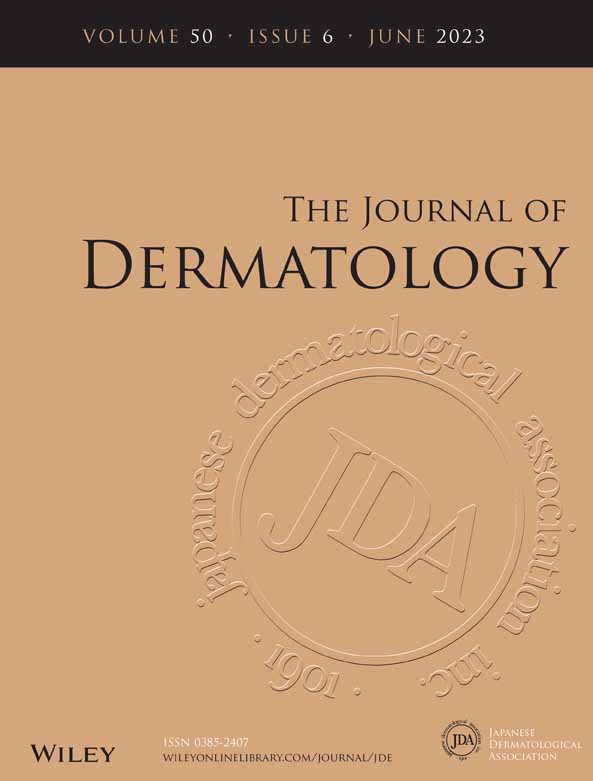Autoimmunity-related neutrophilic dermatosis after coronavirus disease 2019 vaccination: A case report and literature review
Abstract
Autoimmune diseases triggered by coronavirus disease 2019 (COVID-19) mRNA vaccination have been emerging. Here, we report the case of a 27-year-old Japanese man with autoimmunity-related neutrophilic dermatosis, occurring as an initial cutaneous manifestation of systemic lupus erythematosus with Sjögren syndrome after the second dose of the Pfizer/BioNTech COVID-19 vaccination. The patient presented with urticarial erythema and partially annular erythema on the trunk and extremities with severe pruritus. Histopathological analysis showed vacuolar degeneration at the dermo-epidermal junction and interstitial neutrophil infiltration. We reviewed eight patients, including the aforementioned patient, with exacerbation or new-onset of SLE after COVID-19 vaccination and found the patient had relatively mild symptoms, itchy annular erythema, and positive anti-SS-A/SS-B antibodies. COVID-19 mRNA vaccination can induce the production of type-I interferon, which plays a crucial role in the pathogenesis of SLE and may cause autoimmunity-related neutrophilic dermatosis in susceptible individuals. In the case that itchy annular erythema develops approximately 2 weeks after the vaccination, the possibility of systemic or cutaneous lupus erythematosus should be considered. For an accurate diagnosis, dermatologists should obtain a recent vaccination history and perform complete antibody profiling and skin biopsy for patients presenting with annular or erythema multiforme-like lesions.
CONFLICT OF INTEREST
None declared.




